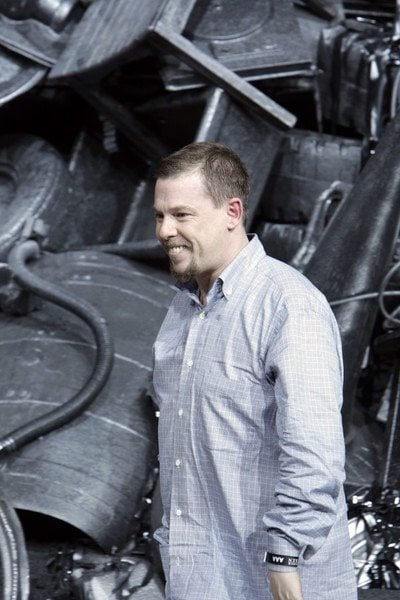Remembering Alexander McQueen


News of Alexander McQueen’s death, apparently by his own hand, at the age of 40 has sent a wave of sadness and shock through the fashion world, who were just sitting down to the first collections at New York Fashion Week. Vogue editor-in-chief Anna Wintour, who reportedly rushed out of the BCBG show upon hearing the news, issued this statement:
“We are devastated to learn of the death of Alexander McQueen, one of the greatest talents of his generation. He brought a uniquely British sense of daring and aesthetic fearlessness to the global stage of fashion. In such a short career, Alexander McQueen’s influence was astonishing — from street style, to music culture and the world’s museums. His passing marks an insurmountable loss.”
Lee Alexander McQueen started his career as teenage apprentice in a tailor shop on London’s Savile Row. He later worked in Milan for Romeo Gigli and enrolled as a fashion student London’s Central Saint Martins in the early ’90s, after applying for a job as a pattern cutting tutor. McQueen’s now infamous graduate collection grabbed the attention of stylist Isabella Blow, who became a champion of the young designer. His early collections, including 1995’s controversial “Highland Rape” show, earned him the epithet of “l’enfant terrible.” Bernadette Morra, FASHION‘s acting editor-in-chief and longtime fashion editor at The Toronto Star, remembers attending one of McQueen’s first shows, in New York in the early ’90s: “It was late at night, in a dingy walk-up. He was a total no-name. There was a small arty crowd milling about and when the music started we made a path for the models to walk. They were wearing the shockingly low ‘bumster’ pants. It was one of those rare moments when, as a reporter, you realize that you are witnessing history unfold. In this case, the birth of greatness. After that, the buzz around McQueen swelled and his shows began to draw huge crushes of people hoping to get in to see this creative genius. And McQueen never, ever disappointed.”
In 1996, McQueen succeeded John Galliano as the creative director for Givenchy. Though his first couture collection for the house wasn’t a success, the designer stayed on until his contract ended 2001. He sold his own company to the Gucci Group that same year. Though he was often a controversial designer, he was no less celebrated. He won four British designer of the year awards between 1996 and 2003 and was later named a Commander of the British Empire.
McQueen’s personal life had been troubled in recent years. His longtime booster Isabella Blow committed suicide by ingesting weed killer in 2007 and his mother, Joyce, passed away on February 2.
His spring 2010 show, his last, was no less cutting edge than his very first. Models with alien-like facial protrusions wearing reptilian digital prints and extreme anteater shoes were filmed by giant robotic cameras to be livestreamed on the internet. But McQueen never lost what he learned in his earliest years. “He was incredibly creative and original, yet also so talented as a dressmaker,” says Susie Sheffman, fashion director for this magazine. “No matter how much spectacle there was on the runway, when you wore his clothes you knew you were in the hands of a masterful tailor.”
Read more about Alexander McQueen
Anna Wintour responds to McQueen’s death [The Cut]
Alexander McQueen, designer, is dead at 40 [NY Times]
Alexander McQueen: Tributes pour in [Telegraph]
EARLIER: Alexander McQueen commits suicide







